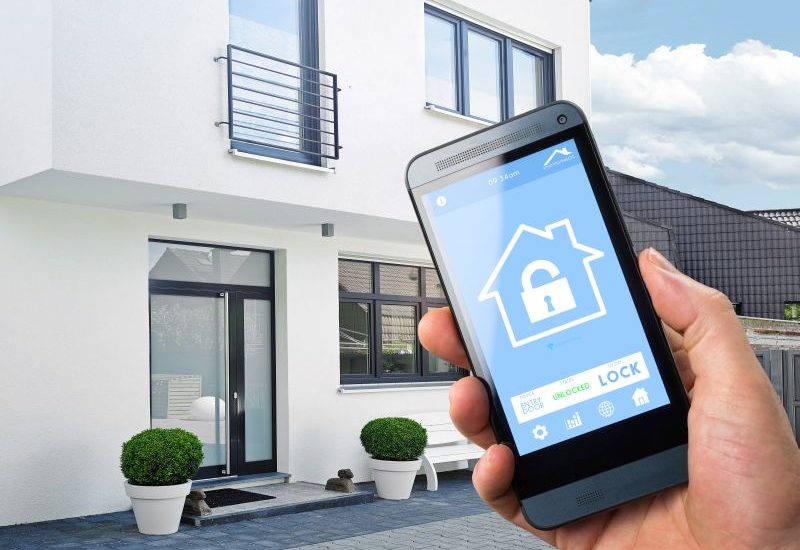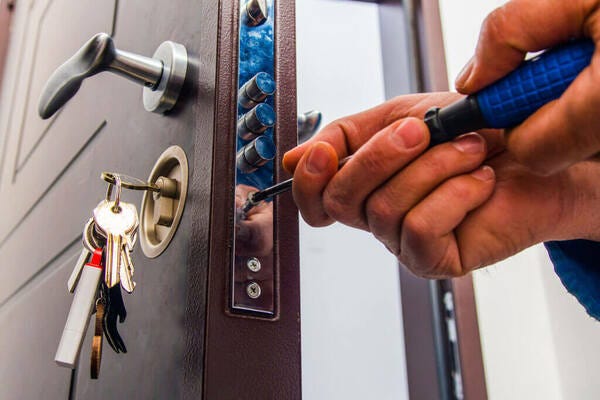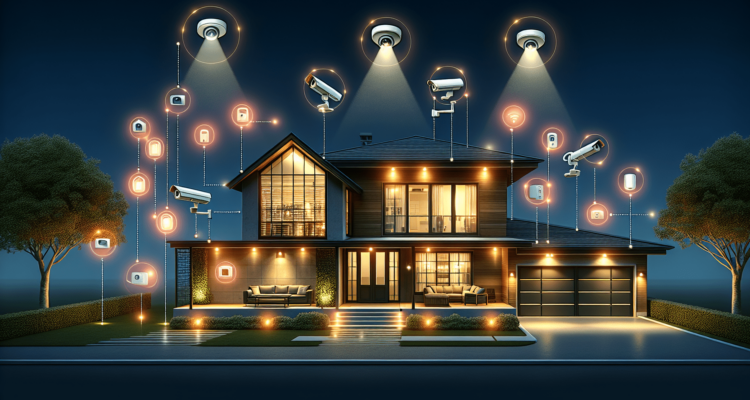How To Upgrade Your Home Security With Advanced Locking Systems
In the spirit of creating a sanctuary that echoes with safety and serenity, “How to Upgrade Your Home Security with Advanced Locking Systems” offers you a profound insight into fortifying your abode. Imagine transforming your home into a fortress of tranquility, where every corner spells security and every moment you spend with your loved ones is devoid of worry. This guide unfurls the essence of comprehensive home security inspections, highlighting how they are pivotal in identifying the subtlest vulnerabilities within your haven. By intertwining humanized security solutions with cutting-edge technologies, from smart locks to sophisticated surveillance, it crafts a blueprint for you to not just react to threats, but to anticipate and neutralize them. With a proactive stance on prevention and a treasure trove of empowering knowledge at your disposal, you are ushered into a realm where your peace of mind is the paramount priority. Unearth the secrets to a fortress that is as invincible as it is inviting, ensuring your family’s safety and creating an enduring legacy of protection.

This image is property of staysafe.org.
Understanding Home Security Basics
Defining Home Security in the Modern Age
Home security today reaches far beyond the simple locks and alarm systems that once defined it. It embodies a comprehensive approach to safeguarding your sanctuary—your home—ensuring it’s a place where you and your family can thrive in safety and comfort. The evolution of technology and the integration of smart systems have expanded the definition of home security, making it not only about preventing unauthorized access but also about creating an interconnected system that protects, alerts, and even anticipates potential threats to your well-being.
Traditional vs. Advanced Locking Systems
When you think about securing your home, the first line of defense is often your locks. Traditional locking systems, while effective in their time, offer minimal protection against the methods burglars today can employ. Advanced locking systems, on the other hand, incorporate technology to not only deter but also actively prevent unauthorized access. These systems range from smart locks that you can control remotely to biometric systems that ensure only registered users can gain access.
The Role of Locks in Your Overall Security Strategy
Your locks are the physical gatekeepers of your home. They act as both a deterrent and a barrier. In your overall home security strategy, locks play a crucial role not just in safeguarding your physical possessions but in protecting the privacy and safety of your family. Therefore, incorporating advanced locking systems doesn’t just enhance your security—it revolutionizes it, making your home smarter and safer.
Assessing Your Current Security Measures
How to Conduct a Home Security Assessment
To effectively upgrade your home security, start by conducting a thorough assessment. Walk around your property and scrutinize every potential entry point, not just the doors and windows but also less obvious places like basement entries or dog flaps. Assess the strength of your existing locks, the visibility of your home from the street, and any areas that are not well-lit at night. This comprehensive inspection will highlight areas of vulnerability that you may have overlooked.
Identifying Weaknesses in Existing Locks
As you assess your home, pay particular attention to the condition and functionality of your current locks. Are they old or easily tampered with? Do they show signs of wear that could be exploited? Identifying weaknesses in your existing locks is a critical step in fortifying your home’s defenses.
Evaluating External and Internal Security Threats
Consider both external and internal security threats. Externally, look at factors like the neighborhood crime rate or isolated areas around your home that could serve as hiding spots. Internally, think about how secure your valuables are and whether your daily routines inadvertently compromise your security. Understanding these threats helps tailor your security upgrades more effectively.

This image is property of www.allinlocksmithllc.com.
Types of Advanced Locking Systems
Smart Locks: Features and How They Work
Smart locks provide keyless entry and the ability to lock or unlock your door remotely through a smartphone app. Many also feature history logs to track who enters and exits, and some even integrate with your home’s Wi-Fi or smart home systems to enable functionalities like automatically turning on lights when the door is unlocked.
Biometric Locks: Enhancing Security with Technology
Biometric locks use unique physical characteristics, such as fingerprints or even facial recognition, to grant or deny access. These locks offer a high level of security since biometric data is nearly impossible to replicate or steal in the way a key or access code can be.
Electronic Door Locks: Convenience and Control
Electronic door locks, including keypad and card access systems, offer a blend of convenience and security. They allow you to set temporary codes for guests and can be easily reprogrammed if a code is ever compromised.
Keyless Entry Systems: Pros and Cons
Keyless entry systems eliminate the need for physical keys, which can be lost or copied. However, they require a reliable power source and can be vulnerable to sophisticated hacking methods. Balancing the convenience they offer with the potential risks is crucial.
The Importance of High-Quality Locks
Material and Manufacturing: What to Look For
The material and build of a lock significantly impact its resistance to force and picking. Look for locks made of strong, durable materials like steel and manufactured with precision to withstand various methods of tampering.
Lock Grades and What They Mean for Security
Locks are often graded based on their durability and resistance to attempts at entry. Grade 1 locks offer the highest level of security, while Grades 2 and 3 may be adequate for interior doors or less critical areas. Understanding these grades helps you make informed choices about where to invest in higher-quality locks.
Balancing Cost with Quality and Security Needs
While higher-quality locks typically come with a higher price tag, balancing cost with your specific security needs is essential. Investing in high-grade locks for exterior doors and high-security areas of your home is a wise decision, while interior locks may not require the same level of security.

This image is property of miro.medium.com.
Integrating Locks with Home Automation Systems
Benefits of a Connected Home Security System
Integrating your locks with a home automation system elevates your home security to new levels. This connectivity allows you to control and monitor your locks remotely, receive alerts for unauthorized access attempts, and even set your home to secure itself automatically at certain times.
How to Choose Compatible Locks and Systems
When choosing locks to integrate with your home automation system, look for compatibility. Many smart locks are designed to work seamlessly with popular home automation platforms, but checking compatibility ensures you can use all features without issue.
Maintaining Security in a Smart Home Environment
In a smart home environment, security isn’t just about physical locks—it’s also about cybersecurity. Ensure your home network is secure, regularly update your devices to protect against vulnerabilities, and be mindful of who has access to your home’s automation systems.
Installation and Maintenance of Advanced Locking Systems
DIY vs. Professional Installation: What You Need to Know
Some advanced locking systems are designed for easy DIY installation, while others may require professional installation to ensure they’re properly integrated with your home’s infrastructure. Consider your own skills and the complexity of the system when deciding which route to take.
Routine Maintenance Tips to Ensure Longevity and Reliability
To ensure your advanced locking systems remain reliable, practice routine maintenance. This might include checking battery levels, ensuring software is up-to-date, and cleaning biometric sensors to ensure clear, accurate readings.
Troubleshooting Common Issues with Advanced Locks
Familiarize yourself with common issues that might arise with your advanced locks, such as connectivity problems or false alarms. Knowing how to troubleshoot these problems can save you time and maintain your home’s security.

This image is property of andersonlockandsafe.com.
Enhancing Door Security Further
Reinforcing Door Frames and Hinges
Beyond the locks themselves, reinforcing your door frames and hinges can significantly enhance your door’s security. Stronger frames and hinges make it harder for intruders to force entry, providing an additional layer of defense.
The Role of Deadbolts in Enhancing Locking Systems
Adding a deadbolt to your door can dramatically improve its security. Deadbolts are much harder to breach than standard locks and, when used in conjunction with an advanced locking system, create a formidable barrier against unauthorized entry.
Security Bars and Door Jammers: Additional Layers of Protection
For added security, consider installing security bars or door jammers. These devices provide a physical barrier to forcing the door open, making them an effective deterrent and an additional layer of protection.
Advanced Surveillance and Monitoring Options
Pairing Locking Systems with Surveillance Cameras
For enhanced security, pair your locking systems with surveillance cameras. This combination allows you not only to control access but also to monitor and record activity around entry points, providing valuable evidence in case of an incident.
Remote Monitoring Capabilities and Mobile Alerts
Many advanced locking systems and surveillance cameras offer remote monitoring capabilities, sending alerts to your phone if unusual activity is detected. This immediate notification allows you to respond quickly, whether you’re at home or away.
The Use of Drones and AI for Perimeter Security
Emerging technologies like drones and AI are beginning to play a role in home security, offering innovative ways to monitor and protect your home’s perimeter. These technologies can provide real-time surveillance and even predict potential threats based on unusual patterns or behaviors.

This image is property of protechsecurity.com.
Legal and Privacy Considerations
Understanding the Legalities of Surveillance
When implementing surveillance as part of your home security, it’s important to understand the legal implications. Ensuring your surveillance methods comply with local laws and regulations is crucial to avoid infringing on anyone’s privacy rights.
Respecting Privacy while Ensuring Security
Balancing security needs with privacy respect is vital. This includes being mindful of camera placement to avoid areas where an expectation of privacy exists, such as neighbors’ properties or public spaces.
Complying with HOA Regulations and Local Laws
If you live in a community with a homeowners’ association (HOA), be aware of any regulations or restrictions related to home security installations. Ensuring your upgrades comply with these rules, as well as local laws, helps avoid potential disputes and legal issues.
Conclusion: Creating a Comprehensive Home Security Plan
Reviewing Your Security Upgrades and Practices
After upgrading your home security, periodically review your systems and practices. Technology and threats evolve, so staying informed and ready to adapt is important.
Continual Assessment and Adaptation to New Threats
Security is not a one-time task but a continuous process. Regularly re-assess your home’s security in light of emerging threats and advancements in technology to ensure your defenses remain robust.
Empowering Homeowners Through Education and Innovation
Ultimately, the goal of enhancing home security is to empower you as a homeowner, giving you the confidence that comes from knowing your loved ones and possessions are protected. By staying educated on the latest security innovations and applying this knowledge to your home, you’re not just securing your property—you’re securing your peace of mind.






